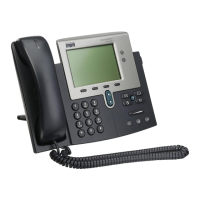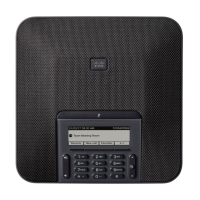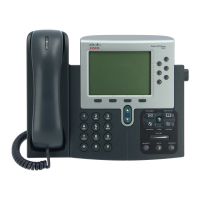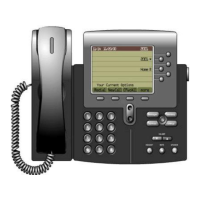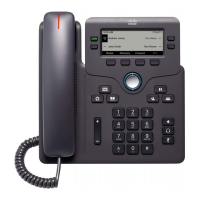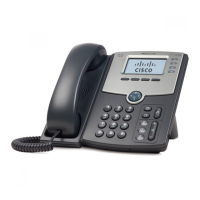3-17
Cisco Unified IP Phone 7906G and 7911G for Cisco Unified Communications Manager 6.0
OL11954-01
Chapter 3 Setting Up the Cisco Unified IP Phone
Configuring Startup Network Settings
Configuring Startup Network Settings
If you are not using DHCP in your network, you must configure these network
settings on the Cisco Unified IP Phone after installing the phone on the network:
• IP address
• IP subnet mask
• Default gateway IP address
• Domain name
• DNS server IP address
• TFTP server IP address
Collect this information and see the instructions in Chapter 4, “Configuring
Settings on the Cisco Unified IP Phone.”
Configuring Security on the Cisco Unified IP Phone
The security features protect against several threats, including threats to the
identity of the phone and to data. These features establish and maintain
authenticated communication streams between the phone and the
Cisco Unified Communications Manager server, and digitally sign files before
they are delivered.
For more information about the security features, see the “Understanding Security
Features for Cisco Unified IP Phones” section on page 1-12. Also, refer to
Cisco Unified Communications Manager Security Guide.
A Locally Significant Certificate (LSC) installs on phones after you perform the
necessary tasks that are associated with the CAPF. You can use
Cisco Unified Communications Manager Administration to configure an LSC, as
described in Cisco Unified Communications Manager Security Guide.
Alternatively, you can install an LSC from the Security Configuration menu on
the phone. This menu also lets you update or remove an LSC.
